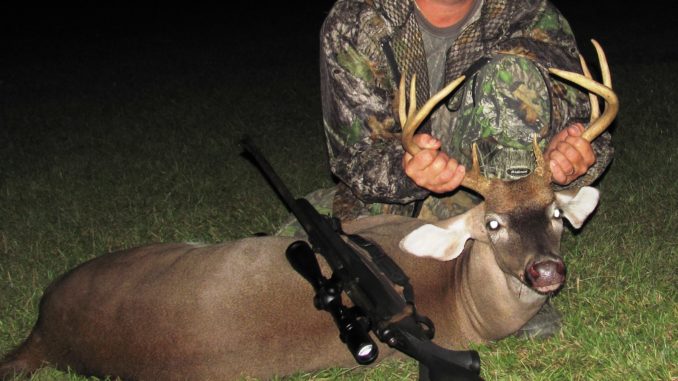
Many hunters in the Carolinas are missing out on a great strategy for attracting deer by failing to grunt, bleat or snort-wheeze.
Deer hunters go to great lengths to get a big buck within shooting range. Preseason planning, analyzing the wind and getting your stand in the right place are all crucial components, but another factor is used to great advantage by some hunters but totally overlooked or misused by many: vocalization.
What can you learn about the art of communicating with and calling to deer that can put a big one under your stand?
Three expert deer hunters from different parts of the Carolinas believe that vocalization is a crucial component of their strategy for big bucks. When used correctly, especially during the rut, the odds of taking a big buck improves dramatically.
Steve Cobb of Union, S.C., has hunted deer all over the country but his primary home base is in South Carolina’s Upstate and North Carolina’s southern Piedmont. A pro staffer with Hunter Specialties for 18 years, he said vocalization is one of the keys to seeing and shooting a lot of big bucks.
“I use various vocalization strategies because they help me kill big bucks,” Cobb said.
“As in many aspects of deer hunting, vocalization can be a double-edge sword. The first consideration is when done correctly, it’s extremely effective on all deer, including big bucks. When done in the wrong manner, including pitch, tone, volume or location, it can ruin a hunt,” he said. “My cardinal rule for vocalization is to imitate the sounds I hear deer make in the specific area I’m hunting. I’ve spent a tremendous amount of time in deer stands, and I focus on sounds deer make in their natural setting. It’s imperative to mimic those sounds.
“In our section of the country, I believe most grunts and bleats are soft and subtle, not loud and aggressive. In some parts of the country, loud and aggressive calling is often best because that’s what the deer do in those locations. It has to do with the size of the deer and the type of rut. Some of those areas have very specific rut periods where breeding time is well-defined. Our rut is what I refer to as a ‘trickle rut’, a longer, less-defined rut that lends to more subtle vocalization. In our type cover and terrain, it’s mostly tending grunts and subtle bleats. That’s what I hear in the woods, so that’s what I do and it works for our area.”
Cobb said creative thinking is often something hunters need to practice when hunting big bucks, but not necessarily when employing vocalization.
“When you think outside the box and do something offbeat in terms of how local deer vocalize and react to these sounds, you’ll likely end up outside that box and empty handed with no buck to show for it,” he said.
Marshall Collette of Greensboro, N.C., spends a lot of time in trees across his home state. He agrees with Cobb’s analysis but takes it a step further in the explanation of vocalization techniques.
A 20-year veteran of both Quaker Boy and Mossy Oak Elite field staffs, Collette said the buck-to-doe ratio in an area has a huge impact on how you communicate with deer in the Carolinas. With the ratio very much tilted toward does, the competition between bucks is less intense. Combined with a rut that is drawn out over several weeks, vocalization by deer is generally more subtle than many hunters realize.
“A great illustration of how the buck-to-doe ratio works is to consider high school-aged boys,” he said. “If three guys have nine girls to consider as a prom dates, some discussion may occur, but not much fighting. But if there are three boys and only three or four girls, the intensity ramps up, and trash-talking will occur — and probably a fight. We’ve simply got a lot more does in our area, so less vocalization in terms of intensity is more appropriate.”
From a South Carolina Lowcountry perspective, the buck-to-doe ratio can be even more pronounced, according to Willie McCutchen, who specializes in bowhunting the Palmetto State’s southern and coastal regions. He has learned from hunting other areas of the country that what works well elsewhere is not the best fit here.
“I rely on vocalization to get deer in close for a bow shot,” McCutchen said. “In my hunting area, based on years of experience, I place the buck-to-doe ratio as high as 6-to-1, maybe more in localized areas. Soft and subtle is the go-to method, but sometimes I do ramp it up just a bit during the rut; that’s really on a deer by deer basis. I begin with subtle calls but will increase intensity if I don’t get a positive response.”
Cobb said hunting the right places is necessary for vocalization to succeed.
“Effective hunting means much more than having a deer respond to a call, I have to be able to see him if he approaches,” Cobb said. “If hunting a thick area, although a good place to find deer, I may not able to see a deer approaching, and the odds of success using various sounds diminish. I want openings and line-of-sight opportunities where I can see bucks as they approach. Often I’ll see a deer before I call, and when I make the grunt, the first thing they often do, if they’re coming to the sound, is to get downwind. It’s crucial to have vision and knowledge of wind direction so I can know what the deer is doing.”
Collette said that the focus of a lot of vocalization is the use of grunts, his go-to call is the simple bleat.
“Bleats are highly underrated,” he said. “I’ve called in more deer by bleating than grunting. I will call blind-calling without seeing a deer and use both grunting and bleating. Many times when blind-calling, I’ll use bleats, and by watching for deer movement I’ll usually see them as they approach. If I see a buck slipping through the woods, especially during the rut, I figure he’s cruising for a doe. Sometimes a simple bleat will cause him to stop and look in the direction of the sound. If he swishes his tail, I’m in the game. Once he starts approaching, I will not call again unless his body language suggests he distracted by something. If you call too often as they get close, the buck will wonder why the doe is way up a tree. They are smart animals and know that’s not natural. They can be fooled, but use common sense.”
Cobb said the reasons bleats work well during the rut are twofold. Does will often bleat when moving away from a pursuing, non-dominant buck and when also when alone and looking for a buck.
“Bucks are territorial, and during the rut, any bleat will potentially cause a buck to move in that direction to investigate,” he said.
Confidence is another aspect of successful vocalization and Collette said when used properly, grunts and bleats do not scare deer.
“I’ve never seen a soft, subtle, grunt or bleat spook any deer I was watching when I made the call,” he said. “It doesn’t always get their attention, but it’s a natural sound and is not alarming. That’s a confidence factor for hunters using calls. I have watched deer ignore a grunt but then react positively to a bleat and vice versa. Sometimes they do not react at all. It’s not a guaranteed success tactic, but I don’t believe it can hurt when done properly, and it often makes a hunt.”
Collette said that calling blind is a good tactic, although he prefers to have his eyes on a deer when he calls. When blind-calling, he keeps all his senses in overdrive because a deer, buck or doe, can appear at any moment.
“Sometimes I’ll catch a glimpse of movement, or it may just be a twig snap or leaves or brush moving that’s directed me to a nice buck slipping in,” he said. “But blind-calling has proven very effective at times.”
McCutchen puts vocalization into perspective for novice and experienced hunters.
“It’s easy to overdo calling, so I recommend hunters begin deer calling low-key,” he said. “Even experienced hunter need to keep it subtle in the Carolinas. Vocalization is not a cure-all and won’t cover up mistakes in terms of wind direction and scent control. However, a few grunts, bleats and a snort-wheeze in the right situation will often arouse the curiosity of a buck looking for a doe. When that occurs you can enjoy a wonderful experience courtesy of vocalization.”

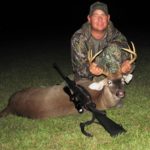
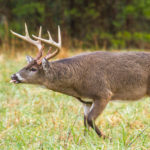
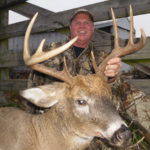
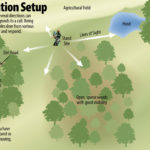



Be the first to comment